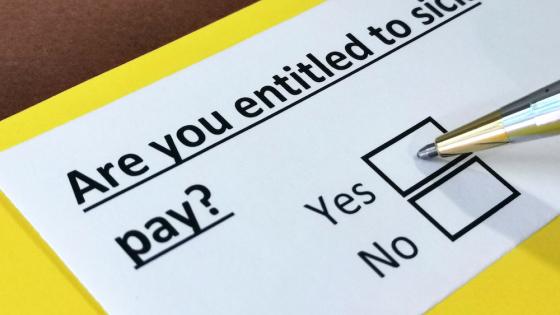The COVID 19 pandemic has turned from a public health crisis into an unprecedented labour market crisis in the course of only a few months. This has prompted economists to argue that countries must “act fast and do whatever it takes” (Baldwin and Weder di Mauro 2020). With the deepening of the economic crisis, an increasing number of papers have suggested that any policy response must keep workers employed and unemployment low to prevent long-term scars in our economies (Baqaee et al. 2020).
The unparalleled challenges have prompted fast and unparalleled policy responses in many countries. Reforms of paid sick leave have often been part of this reaction. This is crucial for an effective employment and social policy response, as paid sick leave can simultaneously protect the health, jobs, and income of sick and quarantined workers (OECD 2020a, Scarpetta et al. 2020). Moreover, paid sick leave plays several additional important roles during a pandemic by:
- Providing compensation to allow workers exposed to the virus to self-isolate;
- Helping to contain the spread of the virus by permitting infected workers to stay at home. Improved access to paid sick leave in some regions and cities in the US reduced influenza-type disease rates by 10% and total work absence by 18% (Stearns and White 2018, Pichler and Ziebarth 2020);
- Absorbing the economic shock by preserving the jobs of sick and quarantined workers. Job losses and working hour reductions during the COVID-19 outbreak have been larger in US states without a paid sick leave system (Chen et al. 2020);
- Allowing for an orderly de-confinement by facilitating a rigorous testing, tracking, tracing, and isolating strategy. To achieve this role effectively in the months ahead, all workers, employed or self-employed, should be entitled to paid sick leave.
Many countries have temporarily strengthened paid sick leave support
New OECD work shows that many OECD countries have resorted to, substantially expanded, or even initiated paid sick leave policies during recent months (OECD 2020b). Crisis response policies included one or several of the following (see the accompanying policy table for more detail):
- Strengthening support to employees suffering from COVID-19
- Extending support to quarantined employees
- Expanding access to paid sick leave, especially for self-employed workers
- Lowering the burden of employers to finance paid sick leave.
However, virtually all crisis response policies on paid sick leave were temporary and limited to workers suffering from COVID 19 or placed in mandatory quarantine.
The rapid increase in take-up, aligned with trends in COVID-19 infections, underlines the importance of paid sick leave during the pandemic. At the peak of the outbreak, take-up of paid sick leave roughly tripled in Sweden and doubled in Italy (Figure 1), before reverting to its normal level. In most OECD countries, around 4-6% of all employed workers were on paid sick leave in the most critical period; this is a significant percentage that could be much higher still had workers not been shifted onto job retention schemes in such large numbers.
Figure 1 Take-up of paid sick leave more than doubled in Italy and Sweden during the COVID-19 outbreak
New paid sick leave cases per week (left-hand scale) and year-on-year percentage changes (right-hand scale).
Note: Data indicate the number of new sickness benefit recipients in Sweden (including the new Disease Carrier Benefit but excluding employer-provided sick pay) and the number of new sickness certifications submitted to the authorities in Italy.
Source: OECD (2020b).
Crisis response 1: Strengthening support to employees suffering from COVID-19
An eligible employee unable to work for four weeks because of COVID-19 now receives, on average across OECD countries, about 70% of their last wage (Figure 2), and even 100% in a significant number of countries. Compensation is less than half the last wage in a few countries, including most English-speaking countries, Colombia, Italy, and Korea. In some of these countries, however, employees often obtain complementary albeit non-mandatory sick pay from their employer, which can also sometimes be as high as 100% of the last wage.
Today, all OECD countries temporarily provide paid sick leave to an eligible employee suffering from COVID-19, even though the payment level and duration can differ considerably across countries. Korea and the US, the two only countries in the OECD without statutory paid sick leave, both established a temporary sickness benefit in case of COVID-19. Almost half of countries strengthened paid sick leave support, as illustrated by the vertical distance in Figure 2 between the stacked bar and the dash.
Figure 2 Many countries have strengthened paid sick leave support for eligible employees suffering from COVID 19
Total gross sick-leave payments during the first four weeks of sick leave due to COVID-19 as a percentage of previous earnings, rules valid in early June 2020
Note: Results refer to an eligible full-time private-sector employee, married with no children, age 40, earning an average wage and working with the same employer for one year. ‘Mandatory paid sick leave’ combines mandatory payments by employers and the government. ‘Non-mandatory employer sick pay’ includes employer sick pay via collective agreements or other arrangements for those countries were most employees would receive such payments. ‘Baseline mandatory paid sick leave’ refers to regulations in June 2019, except for Australia, Israel, Japan, Korea, New Zealand, and Turkey (all 2018). In Australia and Spain, employees are entitled to a benefit other than a dedicated sickness benefit.
Source: OECD (2020b).
Crisis response 2: Extending support to quarantined employees
Paid sick leave has been the prime instrument to support eligible employees in quarantine – an unprecedented policy in almost all OECD countries. While most countries had to take deliberate steps to extend paid sick leave to quarantined employees, extending support was automatic in a few countries through epidemic acts predating the COVID-19 pandemic.
All OECD countries for which information is available now provide income protection to eligible quarantined employees (OECD 2020b). Entitlements are in most cases similar to those for sick workers, with an eligible employee receiving about 70% of the last wage in the first two weeks of a mandatory quarantine on average across OECD countries. For a longer period of quarantine, entitlements tend to fall faster than for a sick worker.
Crisis response 3: Expanding access to paid sick leave
Paid sick leave can only be effective as a broader policy instrument if it is widely available to large parts of the labour force. Although countries have expanded access to paid sick leave in case of COVID-19 or quarantine, important coverage gaps remain:
- Workers in non-standard dependent employment, such as casual and zero hour contract workers, remain mostly excluded from sick pay. For instance, casual workers in Australia are not entitled to paid leave while workers on zero-hour contracts in the Netherlands only receive sick pay for those hours called upon.
- Self-employed workers now can access sickness benefits in most OECD countries, whereas they often had no or limited access going into the pandemic. Nevertheless, self-employed workers still tend to be de facto excluded in countries where sickness benefit enrolment for this group is voluntary and insurance coverage empirically very low, such as in the Czech Republic, Netherlands, Poland, Switzerland, and in the first six weeks of a sickness spell, Austria as well. Self-employed workers also generally cannot access sickness benefits in Italy.
- Gig workers, freelancers, and workers in dependent self-employment are in most cases not entitled to paid sick leave. They can now temporarily access sickness benefits in a few countries. Some platforms voluntarily provide sick pay to their gig workers, although compensation levels tend to be very low (Fairwork 2020).
Crisis response 4: Lowering the burden of employers to finance paid sick leave
Employers are financially responsible for sick pay during an initial period of one to two weeks in most countries, or several weeks or months in some. This system encourages employers to prevent sick leave and help sick workers return to work, but it is counterproductive in a pandemic, when prevention requires sick workers to stay at home. Moreover, the system adds to the major financial stress that many employers are experiencing during this period.
In view of these considerations, more than half of OECD countries have lowered the burden of employers to finance paid sick leave (OECD 2020b). In addition, most governments finance entirely any paid sick leave in case of a quarantine.
Effective paid sick leave for the de-confinement and beyond
An effective system of paid sick leave is crucial for an orderly de-confinement based on testing, tracking, tracing, and isolating people, as attempted in most countries. Paid sick leave allows infected and potentially infected workers to quarantine quickly, without job loss and with limited income loss. The financial cost of providing paid sick leave to quarantined workers is small in comparison to the cost of them not isolating and spreading the virus further. Furthermore, paid sick leave for the same reasons remains a major protective device for workers and societies in case of a second infection wave.
Paid sick leave, however, can only facilitate an orderly de-confinement and be an effective device during a possible second wave of infection under two conditions. First, if countries keep in place their temporary extensions, and second, if they further extend paid sick leave entitlements to groups of workers that are still not covered. Otherwise, like many other policy tools, paid sick leave remains a partial response with significant inequalities across different groups of employed and self-employed workers.
Countries should also place structural paid sick leave reforms on their policy agenda when the pandemic passes. Structural reforms should focus on:
- Permanently closing long-known gaps in paid sick leave regulations for all groups of workers and all types of disease;
- Promoting the prevention of sickness and facilitating the return to work of sick workers by reinforcing work incentives and employment support;
- Preparing for future pandemics by improving the adaptability of paid sick leave systems. Countries should consider introducing epidemic acts that automatically and temporarily strengthen paid sick leave for sick workers, extend entitlements to quarantined workers, and reduce the financial obligations of employers.
References
Baldwin, R and B Weder di Mauro (2020), Mitigating the COVID Economic Crisis: Act Fast and Do Whatever It Takes, VoxEU.org eBook, CEPR Press.
Baqaee, D et al. (2020), “Policies for a second wave”, Brookings Papers on Economic Activity, Conference Draft, June.
Chen, S et al. (2020), “The economic impact of Covid-19 in Europe and the US: Outbreaks and individual behaviour matter a great deal, non-pharmaceutical interventions matter less”, VoxEU.org, 11 May.
Fairwork (2020), The Gig Economy and COVID-19: Fairwork Report on Platform Policies.
OECD (2020a), “COVID 19: From a health to a jobs crisis”, in OECD Employment Outlook 2020, OECD Publishing, Paris.
OECD (2020b), “Paid sick leave to protect income, health and jobs through the COVID-19 crisis”, OECD Policy Responses to Coronavirus (COVID-19), OECD Publishing: Paris, 2 July.
Pichler, S and N Ziebarth (2020), “The pros and cons of sick pay schemes: Contagious presenteeism and noncontagious absenteeism behaviour”, VoxEU.org, 12 May.
Scarpetta, S et al. (2020), “Supporting people and companies to deal with COVID-19: Options for an immediate employment and social-policy response”, VoxEU.org, 12 April.
Stearns, J and C White (2018), “Can paid sick leave mandates reduce leave-taking?”, Labour Economics 51: 227-246.









